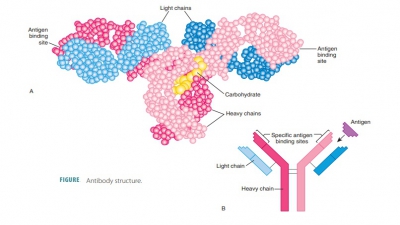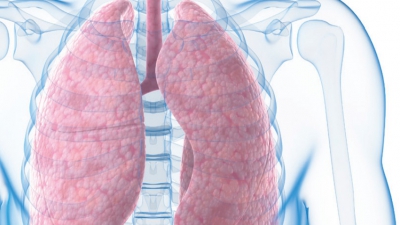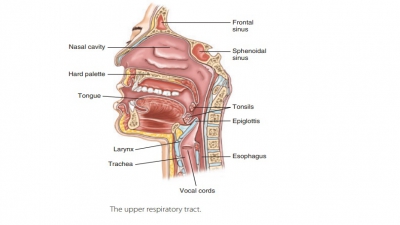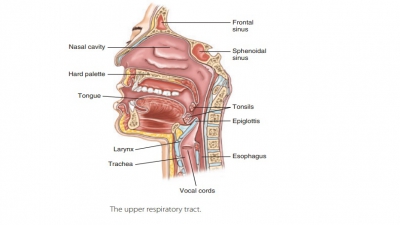Hypersensitivities
| Home | | Anatomy and Physiology | | Anatomy and Physiology Health Education (APHE) |Chapter: Anatomy and Physiology for Health Professionals: Lymphatic System and Immunity
1. Define the term “autoimmune disease” and list examples. 2. Explain the type of hypersensitivity that is also known as an allergic response. 3. When glomerulonephritis develops as a result of systemic lupus erythematosus, which type of hypersensitivity is related?
Hypersensitivities
When the immune system damages tissues while fighting off
threats, such as animal dander or pollen, hypersensitivities
develop. Hypersensitivities are clas-sified by how long they persist and if
they involve T cells or antibodies. Delayed
hypersensitivities are related to T-cell activity. Immediate and subacute
hypersensitivities are caused by antibody-associatedreactions. Immediate hypersensitivities are also
called acute or type I hypersensitivities.
Commonly, peoplerefer to this type as allergies.
Type I Hypersensitivities
When an immune response occurs because of a non-harmful
substance, it is called an allergic
response. Immune and allergic responses sensitize
the lym-phocytes, and the antibodies produced may combine with antigens.
Allergic reactions can damage tissues, however, whereas normal immune responses
cannot. Allergens are
a type of antigens that trigger allergicresponses, which begin within seconds
after contact.
A fairly rare type I hypersensitivity is anaphylac-tic shock, which is systemic.
It is usually caused by anallergen directly entering the blood and circulating
quickly through the body. The most frequent causes of anaphylactic shock
include injection of foreign substances such as penicillins, which act as haptens; bee stings; and spider bites.
Prompt administration of antihistamines
can block actions of histamine and prevent many signs and symptoms of immediate
hypersensitivity. Popular antihistamines include the over-the-counter drug diphenhydramine hydrochloride(Benadryl®).Severe
anaphylaxis is treated with inject-able antihistamines, epinephrine, and
corticosteroids.
Type II Hypersensitivities
Both the type II and type III hypersensitivities are
classified as “subacute.” They are also caused by antibodies but not the same
one as in the type I hyper-sensitivities. They have a slower onset and a longer
reac-tion. They usually occur within one to three hours after antigen exposure
and last for between 10 and 15 hours.
Type II hypersensitivities are related to IgG and are also
called cytotoxic reactions. They
occur when antibodies bind to antigens on certain body cells. Cytotoxic
reactions stimulate phagocytosis and complement-mediated lysis of cellular
antigens. These reactions may occur after transfusion of blood that was not
matched correctly, which results in comple-ment lysing the transfused blood
cells.
Type III Hypersensitivities
Type III hypersensitivities are known as immune-complex hypersensitivities. They
are related to IgMand occur when antigens are distributed throughout the body
or blood, with the many formed insoluble antigen–antibody complexes unable to
be cleared from a certain area. Often, this is linked to an autoimmune disease
or a persistent infection. Intense inflammation results, including complement-mediated
cell lysis and death via the actions of neutrophils. This severely damages
local tissues, which is known as necrosis.
Examples of immune-complex hypersensitivities include glomerulonephritis caused
by systemic lupus erythematosus and farmer’s
lung caused by inhalation of moldy hay.
Type IV Hypersensitivities
Type IV hypersensitivities are also called delayedhypersensitivities and are linked
to T cells. Theydevelop over one to three days, with inflammation and tissue
damage occurring because of cytokine-ac-tivated macrophages or cytotoxic T
cells. Examples include allergic contact
dermatitis , often caused by contact with poison ivy, nickel and other
metals, cos-metics, and deodorants. Also, type IV hypersensitiv-ities are used
when testing the skin for tuberculosis. After introduction of tubercle
antigens, a person who has been sensitized to these antigens develops a small,
hard lesion that lasts for days. This constitutes a posi-tive result, and
tuberculosis is diagnosed.
Tissue Rejection Reaction
Another type of reaction concerns transplantation and tissue
rejection. When a body part is transplanted from one person to another, the
receiving patient’s immune system may recognize the transplanted part as
foreign and attempt to destroy its tissues, causing tissue rejection reaction. A tissue rejection is simi-lar to the
cellular immune response against foreign antigens. The greater the difference
between the antigens on cell surface molecules of the donor and recipient, the
greater and more rapid the rejection reaction. Therefore, donor and recipient
tissues must be matched to minimize these reactions. A donor’s tissues must be
antigenically similar to the person receiving the transplant.
The four major types of transplant tissue, or grafts, include the following:
■■ Isograft
from an identical twin (example: bone marrow from a healthy twin to a twin
who has leukemia)
■■ Autograft
from another part of the recipient’s own body – this is not an actual
“transplant” since it comes from the same individual (example: skin from one
area of the body to replace burned skin in a different area)
■■ Allograft
from another person who is not an identical twin (example: kidney transplant
from a relative or a closely-matched donor)
■■ Xenograft
from another species, such as baboonsor pigs (example: heart valves from an
animal)
Immunosuppressive drugs are used to reduce tissue rejection.
Although they reduce the immune response by suppressing antibody and T-cell
formation, they weaken the recipient’s immune system. Frequently, transplant
patients survive the transplant but die from an infection caused by a weakened
immune system.
1. Define the term “autoimmune disease” and list examples.
2. Explain the type of hypersensitivity that is also known as
an allergic response.
3. When glomerulonephritis develops as a result of systemic
lupus erythematosus, which type of hypersensitivity is related?
Related Topics




